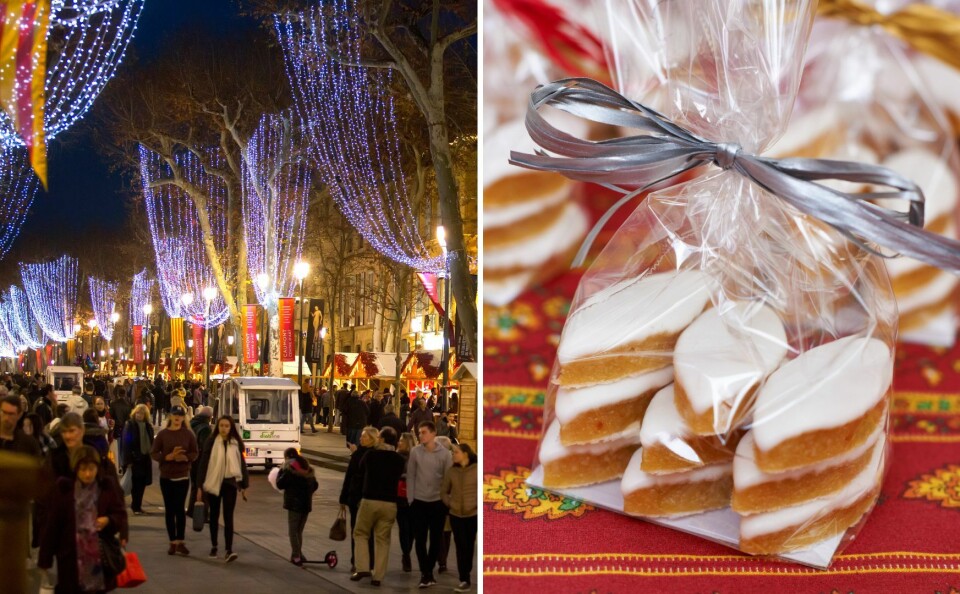-
Ten top science museums to visit in France
Explore interactive exhibits and workshops offering engaging experiences and fun for all ages
-
Exploring Vulcania: France's volcanic adventure theme park
Discover the thrilling and unique blend of science and entertainment in Puy-de-Dôme
-
Martel: the medieval French town home to a 'truffle' train and lavender festival
The small town in the Lot offered refuge to an English throne heir until his death
Aix-en-Provence: the refined city full of French Christmas tradition
Watch santons figures being made, sample the sweet calissons or travel back to the 1960’s in elegant Aix

It is tempting to describe Marseille and Aix-en-Provence as twin cities, but in reality they are chalk and cheese.
Where Marseille is rumbustious and gutsy, Aix is beautiful and refined.
While Marseille was extensively bombed during WW2, Aix boasts acres of well-preserved historic palaces.
With a population of around 1.6 million in Greater Marseille, Marseille vies with Lyon for the title of France’s second largest city after Paris, but Aix is content to be home to 150,000 souls.
Read more: Visit magical Marseille and swap snow for sun this Christmas
Santons are actually sculptures
Aix boasts a number of santon makers, and visiting their workshops is fascinating.
The Fouque family have been making clay santons in Cours Gambetta for four generations.
“They are actually sculptures,” says Catherine Fouque. “Each one is handcrafted in clay, and has to be finished within a few days or the clay dries out and can’t be worked any more.
“Once the first one is made, we make moulds in order to reproduce them. Once they are fired, the santons are hand painted in the workshop.
“The figures have different names and characters but they are all portrayed as being extra good because it’s Christmas Eve.
“The iconic Coup de Mistral figure is a shepherd struggling to walk into the wind. It was created back in 1952 and has been copied by other santon makers, but is our most iconic creation.”
Read more: Provence’s santon-makers launch bid for Unesco recognition
Read more: Behind Provence’s famous traditional festive figurines
Shepherd’s story created in the workshop
The story behind it is another romantic yarn: the wind-blown shepherd is based on a real person called Jean-Baptiste, who fell in love with a rich girl called Renaude.
Her father was not overjoyed at the match, but eventually allowed them to marry as long as they kept it secret. The lovers agreed, married in secret and retired to the countryside, where they lived in happy poverty ever after.
A symbol of their devotion is that JB’s trousers are patched with fabric from Renaude’s dress.
A visit to the shop includes an explanation of how the santons are made, plus the chance to watch through the glass as they are painted in the workshop.
Traditional calissons sweets created for a queen
At Christmas, the narrow pedestrianised lanes in the old city are packed with boutiques selling high fashion as well as the local speciality, calissons.
Read more: A bonbon-themed tour of France: the sweetest places to visit
Tales explaining the origin of these sugary almond-paste lozenges abound. The most romantic concerns the marriage of King René d’Anjou with Jeanne de Laval in 1454.
Apparently the bride was so overcome with gloom during the preparations for the wedding that she never once smiled. So the king ordered his chef to concoct a new dish to put a smile on his prospective wife’s face.
He produced a plate of dainty almond flavoured sweetmeats, and at the first taste, she is reputed to have smiled broadly and declared in Provençal, “di calin soun” (They are hugs).
Ever since, calissons have been made in Aix, and nowadays flavours include lavender, chocolate, raspberry, caramel and rose.
Whether or not you have a sweet tooth, the beautiful packaging makes them an irresistible purchase – and they are one of the traditional ‘thirteen desserts’.
Museums to visit
If you love small, sleepy museums, check out the Musée du Vieil Aix, which has a modest collection of puppets depicting the Nativity scene, along with an interesting display explaining how the colourful Provençal prints were developed.
Very close is the Musée des Tapisseries, which also contains scenery and props from the opera festival.
The tapestries are extraordinary (check out the expressions on the horses’ faces) and the current temporary exhibition, about pleating and folding fabrics, is also fascinating.
Elegant art and a 1960’s timewarp
If you are looking for elegance, go to the Caumont Centre d’Art.
The café serves salads and savoury tarts at lunchtime, as well as cakes all afternoon.
There is a sweet retreat garden out the back, but the interior is even better. If they have it, try the raspberry tart.
For a dose of culture and a timewarp back to the 60s, visit the Fondation Vasarély, housed in a purpose-built museum consisting of a series of hexagonal ‘cells’ decorated on the exterior with large black-and-white circles inside squares.
Inside, many of the artworks in the permanent exhibition were specifically created for the museum, resulting in an extraordinarily homogenous display.
The codification of colour, the repeated geometric shapes, and simplified lines are redolent of the 1960s futuristic vision.
Related articles
France’s finest chateaux gardens and parterres are magical in December
Traditional French Christmas food and a very modern bûche de Noël
How to keep your Christmas cyclamen alive all year in France
























